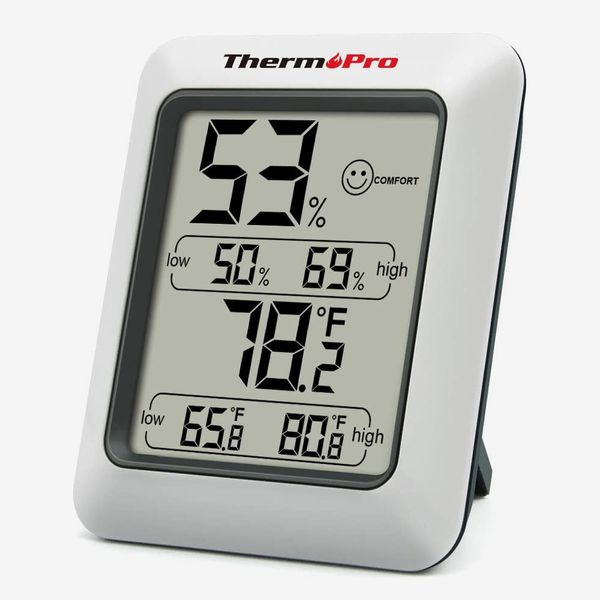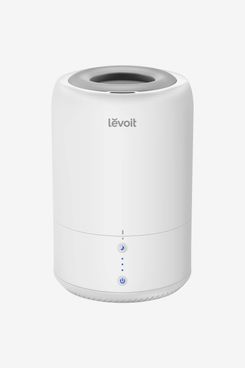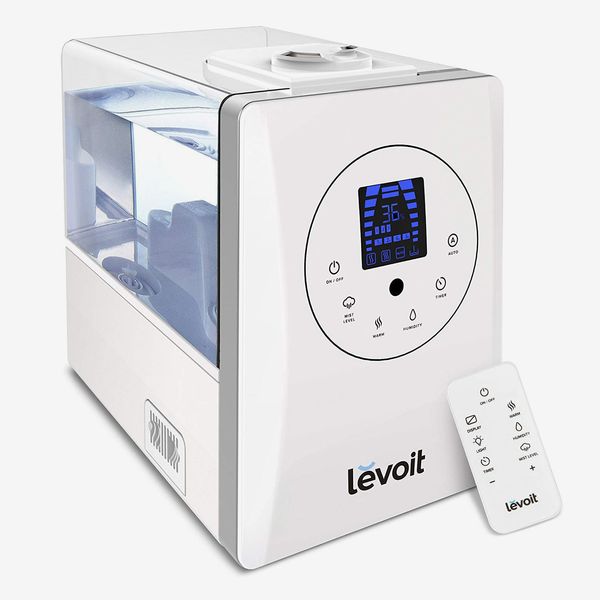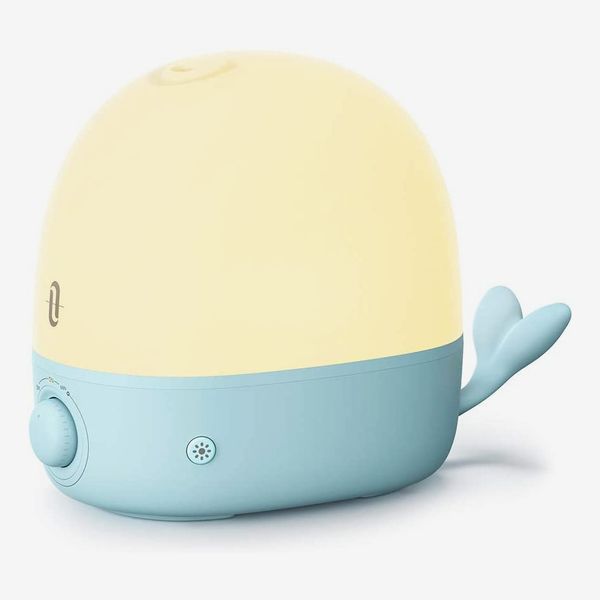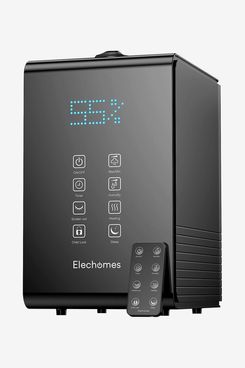
In the last couple of weeks, a certain corner of Twitter has been very angry about humidifiers. This was thanks mostly to Angela Lashbrook’s rant against the Honeywell HCM-350 Germ Free Cool Mist Humidifier, which grew into a cathartic group airing of grievances. Lashbrook describes the HCM-350 as a “loud, messy, impossible to clean monstrosity,” and many fellow owners took to the comments to agree. A few even bitterly tagged the review site Wirecutter, which has listed the HCM-350 as its top pick among humidifiers since 2015.
People who didn’t own the HCM-350 had war stories of their own — humidifiers that gurgled or buzzed, that leaked or spread white dust throughout the room, that were coated with mold so quickly they couldn’t keep up. Reading through the frustration (and having experienced quite a bit of it ourselves), the Strategist couldn’t help but wonder whether there are better options out there or if we should all just give up on humidifiers. That might have been Wirecutter’s feeling when it tweeted this response: “We’re sorry to hear so many of you have had such bad experiences with our top pick. Frankly, as with printers, humidifiers are pretty frustrating.”
That’s the heart of the thing: It’s not that one model is terrible. It’s that, through the machines’ fault or ours, all humidifiers are terrible. Yet we keep on buying them. New parents, people with dry skin, anyone prone to nosebleeds — nearly 10 million people buy humidifiers in the United States every year. It’s like we’re all lining up, asking to be disappointed.
We decided to look into why finding the perfect humidifier — or even a passable, not impossible to clean, somewhat quiet one that doesn’t smell like spoiled milk — could be so hard. We wanted to learn how they actually work and what we can do to make them work better.
How do humidifiers work?
“All humidifiers put water vapor into the air, but they do that in different ways,” says Sarah Drake, brand manager of seasonal humidifiers at Helen of Troy, the parent company behind Vicks and Honeywell humidifiers. There are three main types, she says, each with their own technology.
Warm-mist humidifiers: Electricity or another type of energy goes into the system to boil the water, changing it from liquid to gas. The warm mist produced goes into the air, increasing humidity. One benefit of this type of humidifier is that boiling the water destroys bacteria and germs. But because these humidifiers are hot and can cause burns, you need to be careful with them. In fact, the American Pediatric Association says not to use them around kids.
Evaporative humidifiers: This type of humidifier, which includes the HCM-350, wicks water through a filter then uses a fan to blow air across the filter where it absorbs moisture as it passes. Although this type of humidifier can be noisy because of the fan and expensive because you need to replace the filters every month, if you have minerals in your water, many will be captured by the filter instead of pushed in the air and breathed in, which can be dangerous.
Ultrasonic humidifiers: These “cool mist” humidifiers are super common and have the benefit of being small and affordable. They work by using high-frequency sound vibrations to break water droplets into a fine mist that gets pushed out into the air. Because they don’t have a filter, ultrasonic humidifiers should be used with distilled water. (See below.)
How humid should a room be?
The sweet spot for humidity, says Dr. David Hill, M.D., a spokesperson for the American Lung Association and a pulmonary and critical care physician in Connecticut, is 40 to 60 percent. If you have an ultrasonic humidifier that’s too big for your space (or turned too high), you can accidentally exceed this level. That’s a bad thing. “Beyond 60 percent, you’re increasing mold, allergies, dust mites, and your chance of infection.” To get your humidity levels right, you need to know the dimensions of the space you want to humidify; each humidifier is rated for coverage area in square footage, which should be marked on the box. Typically, the larger the room, the larger the water reservoir you want.
Next, you’ll need to do a little testing to make sure your humidifier is actually providing the humidification it promises. And for that, you need a humidifier accessory called a hygrometer. That’s right, you have to buy something else.
Fortunately, hygrometers aren’t too expensive. This one’s only $11 and has more than 49,000 five-star reviews on Amazon. It also serves as a room thermometer.
“Hygrometers measure relative humidity, which is the amount of moisture in the air compared to how much moisture the air can hold,” Drake says. Stephanie H. Taylor, a physician, architect, and Harvard Medical School InciteHealth fellow, recommends placing the hygrometer in a spot that has average temperature and air movement for that room. If your RH measurement is too low or too high, many humidifiers have adjustment knobs that allow you to increase or decrease output. (If your RH is too low and your humidifier is already at its maximum output, you’ll either need to add another to the room or replace it with a larger one.) “When it’s really cold outside,” Taylor warns, “you may not be able to achieve [40 percent RH] without getting condensation on your windows. In this case, you can temporarily settle for 35 percent.”
What’s the best way to clean a humidifier?
There’s just no such thing as an easy-to-clean humidifier. Many of the reservoirs have tiny openings in the bottom that are barely wide enough to get two fingers through, much less a sponge and your hand. Even running them through the dishwasher (for the ones that are dishwasher safe) doesn’t accomplish much. Cleaning the electric component below the reservoir is tougher yet, thanks to all sorts of crevices that even a toothbrush can’t seem to get into. This is probably why, in a survey by Consumer Reports of humidifier owners, 59 percent said they don’t clean theirs every day. One in four people said they clean it twice a month or less.
This is not okay, Hill says. If you don’t clean your humidifier at least once a week, you risk serious issues, including exacerbated symptoms for asthma sufferers. Also, “humidifiers that are not cleaned and maintained properly can be contaminated with pathogens that can cause lung disease,” he says. “There have also been outbreaks of Legionnaires’ disease associated with improperly maintained humidifiers.”
Even humidifiers like the Canopy, Dyson’s $800 Pure Humidify+Cool, and the Honeywell HCM350W, which claim that their UV lights stop bacteria, still need to be cleaned. According to Taylor, “UV light only reduces bacterial and fungal growth.” It can’t stop it entirely.
Hill also notes that cleaning products with chemicals, even those marketed specifically for cleaning humidifiers, are a bad idea because the humidifier can blast the chemicals into the air. In one instance, a humidifier disinfectant led to 51 people dying and hundreds more getting sick in South Korea. Instead, Hill recommends using regular soap and water and scrubbing every wet surface before rinsing clean with water.
Do you have to use distilled water in humidifiers?
Unfortunately, if you don’t have an evaporative humidifier, the answer is yes, according to the EPA. By using tap water, filtered or not, Hill says, “you’re creating indoor air pollution.” That’s because ultrasonic humidifiers aerosolize minerals that occur naturally in tap water. Those minerals aren’t a health issue when you consume them in water, but they can be toxic if breathed in. A telltale sign you have a problem is if you see white dust around the humidifier. That’s the minerals.
So is it worth it?
There’s not one “best” humidifier that’s frustration-free — and there’s probably not one on the horizon, either. “They aren’t destined to be improved much more because to solve these issues would mean a big investment in research and development, and customers probably aren’t going to be willing to pay the steep price tag that would need to come with it to see a real improvement,” says Ray Kampmeier, owner of the product development and electronics engineering company the Humble Transistor in Portland, Oregon.
The bottom line is that if you’re willing to do the work to maintain it correctly, any humidifier can help with many of the problems we associate with dry air. There are a few features to look out for: We recommend looking for top-fill reservoirs because they are easier to fill and seem to have fewer leak issues than tanks with caps on the bottom, which tend to drip on the walk back to the humidifier base. Generally speaking, top-fill tanks also have larger openings, making them easier to clean. (The components under the reservoir, however, are always going to be a cleaning challenge. That’s a burden any humidifier lover will have to carry.) We also suggest ignoring the presence of a built-in hygrometer, since its proximity to the humidifier means it isn’t necessarily going to give you an accurate reading for the rest of the room. After looking through our past coverage of humidifiers, we’ve picked out the Strategist-recommended options that seem best and included them below.
But there’s also a low-tech alternative, says Hill, who does not use a humidifier in his own home. Instead, he recommends trying something that’s much simpler and cheaper: “Stay hydrated during the day, keep a glass of water by your bed for when your throat feels dry in the night, and if you’re having nosebleeds, use a saline spray to keep your passages moist. It’s that simple.”
Strategist-approved humidfiers
Although there are some naysayers, including a few people who complain about the “chimney” that the mist comes through, many customers specifically call out this model for having a reservoir that’s easy to clean.
This humidifier can switch between hot and cool mist. It also has a six-liter tank and a wide opening for cleaning. “My hand can easily fit into the canister,” says one reviewer.
A cute design and built-in night-light make this humidifier perfect for nurseries. And thanks to a wide opening in the tank, dozens of reviewers call it “so easy to clean.”
Although it’s slightly more expensive than other options, this unit has a modern digital display and a convenient handle that makes it easy to carry the (easy-to-clean) reservoir, even when it’s full.
The Strategist is designed to surface the most useful, expert recommendations for things to buy across the vast e-commerce landscape. Some of our latest conquests include the best acne treatments, rolling luggage, pillows for side sleepers, natural anxiety remedies, and bath towels. We update links when possible, but note that deals can expire and all prices are subject to change.
